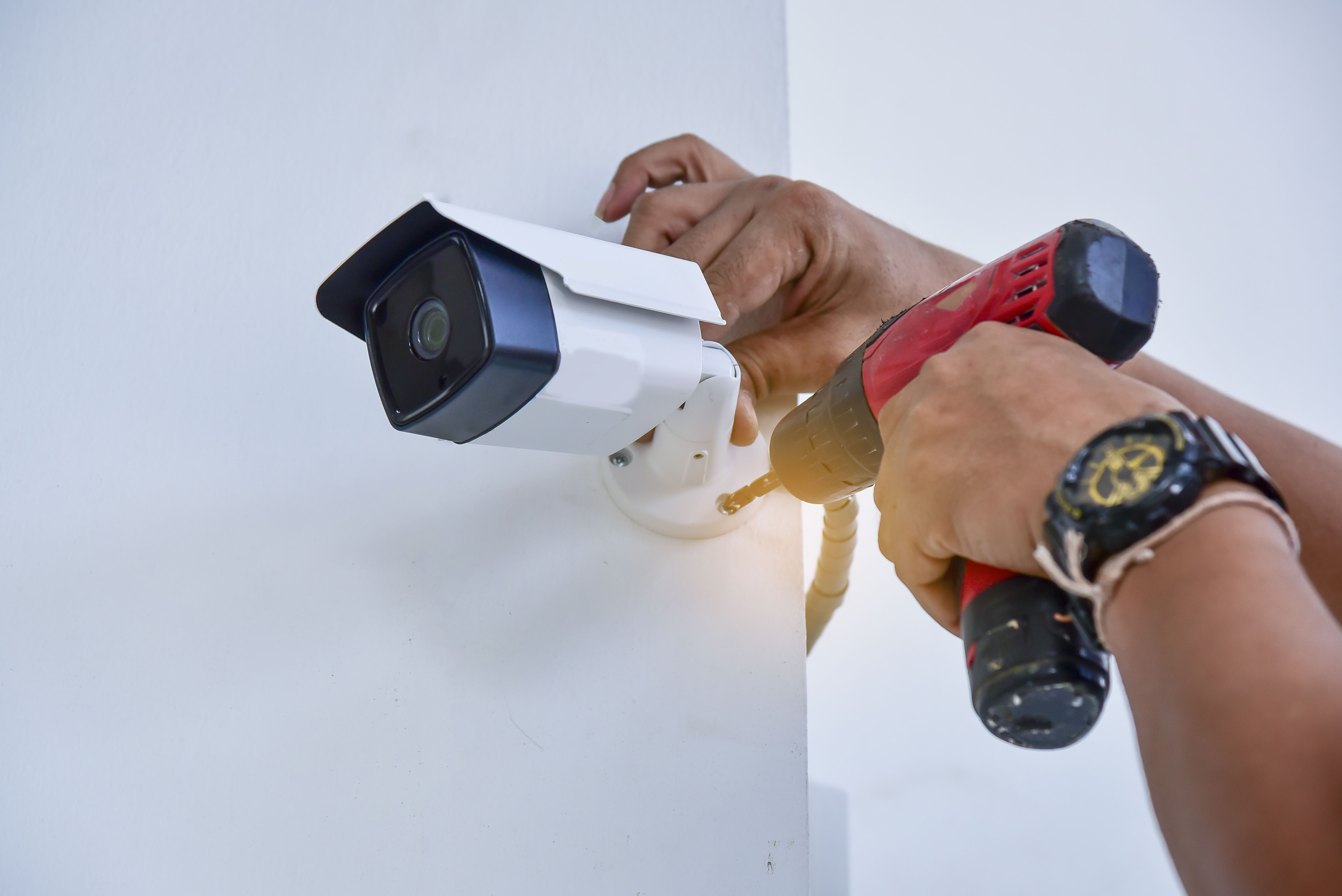Why You Should Invest in Outdoor Security Camera Protection
John Kolb is Director of Technical Sales at DGA Security, where he provides advanced technical support to DGA customers and evaluates emerging security technologies. A 43-year industry veteran, John holds a Certified Engineering Technologist (CET) status from NICET and a Certified Protection Professional (CPP) status from ASIS International, the gold standard certification for security management professionals.
When planning your business security system, it’s important to know the differences and application of outdoor vs indoor security cameras to deter crime. Despite their similar appearance, these security cameras have significant functionality differences.
Upsides of Outdoor Security Cameras
Ruggedness
Outdoor security cameras are built to withstand extreme conditions and climates. They can handle cold via built-in electric heating strips and heat via durable insulation. Outdoor security cameras are also waterproof and therefore impervious to driving rain, hail, and snow. These measures protect the delicate inner electronics of the camera from water damage.
One way to know whether your camera is built to last in varying weather conditions is by its IP rating. At DGA Security, we always aim to install the gold standard: IP67, though IP66 is also acceptable.
To add an extra layer of protection to these already rugged devices, your security installer can install a special housing that protects the camera from vandalism attempts. This housing is clear and does not obstruct the camera’s view. It also protects the camera lens from the buildup of hard water stains from the rain.
Adaptiveness
Outdoor security cameras work in dynamic and challenging environments. For this reason, they come equipped with extra features such as video analytics. For instance, an indoor security camera may trigger a video alert when it senses any object’s movement, but an outdoor security camera with video analytics will ignore things like animals and trees while paying particular attention to objects like cars and people.
Another feature is the ability to choose a telephoto or wide-angle lens when initially installing the security camera. Once installed, you can digitally zoom. This flexibility allows you to adjust for a parking lot (wide angle) or an alley (telephoto).
Built-in illuminators allow you to capture a clear image in total darkness. Furthermore, outdoor conditions often have highly contrasted lighting conditions. Indoor security cameras might not be able to clearly capture a backlit scene of someone standing directly in front of a bright light, whereas a properly specified outdoor security camera will use wide dynamic range, which balances the light so that you can clearly see details in both light and dark conditions.
Downsides of Outdoor Security Cameras
Aesthetics
Because of their ruggedness and the extra technology outdoor security cameras have, they are usually bulkier than indoor security cameras and may not blend well into some interior applications.
Cost
Due to their extensive capabilities, outdoor security cameras generally cost more than indoor ones.
Substituting Indoor for Outdoor Security Cameras and Vice Versa
You might think it is possible to use indoor security cameras outside to save money, but indoor security cameras will not survive the elements. On the other hand, outdoor security cameras used indoors are less cost-efficient and could look too obvious. We only recommend outdoor security cameras indoors in specific indoor situations like restaurants with a cold room or other harsh conditions.
When to Use Indoor Security Cameras
We’ve promoted the benefits of outdoor security cameras in this article, but indoor security cameras are still crucial for a business security system. Indoor security cameras can have powerful analytics that monitor loiterers or people in odd locations. You can also integrate your video surveillance system with access control and intrusion alarms to receive video alerts. Indoor security cameras also more easily blend into the aesthetics of your business, as with recessed cameras that mount flush to the ceiling.
Real World Application
In real life, business owners have successfully prevented crimes from occurring with outdoor security cameras. Outdoor security cameras helped them detect strange activity like casing when the same vehicles and people loiter in the vicinity of a business for several consecutive days. Outdoor security cameras can immediately alert customers and monitoring centers of this behavior so that action can be taken.
Outdoor security cameras also help to protect your most valuable asset: your employees. After closing up at night, instruct your employees to check the outdoor security cameras to ensure it is safe to exit the building. If they see someone acting suspiciously, they can call for help while remaining inside. Burglaries often occur when criminals gain entry to buildings when authorized individuals are exiting the building.
Main takeaways
Outdoor security cameras are your first line of defense in a business security system. Paired with an access control system, indoor video system, and an intrusion alarm system, your business will be more secure.
Related articles
Why Should I Invest in a Professionally Installed Security Camera System?
Common Video Surveillance Mistakes to Avoid
Benefits of Integrating Video Surveillance & Access Control Systems




